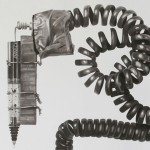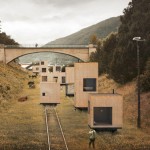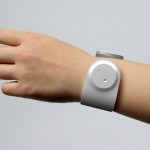 |
| Masamichi Handa, Executive Officer and Head of the Imaging Business Unit of Olympus Corp, pictured at the CP+ show, in Yokohama, Japan. |
DPReview attended the 2017 CP+ show in Yokohama, a few weeks ago, and during the show we made time to sit down with senior executives from several major manufacturers. One of them was Mr. Masamichi Handa, head of Olympus’s Imaging Business Division. We spoke to Mr. Handa about reaction to the E-M1 Mark II, his ambitions for the future of mirrorless cameras, and the effect of last spring’s earthquake on production.
The following interview has been edited slightly for clarity and flow.
How has reaction been to the E-M1 Mark II?
I was a bit afraid after the earthquake that we’d have to delay launch. Originally we had intended to start sales straight after the launch at Photokina. But we had to delay by a few months. We don’t like doing that, because there’s so much excitement at launch. But we started sales in December, so we’re in the middle of the initial wave of sales now, and feeling quite comfortable.
What was the exact impact of the earthquake?
There was a device shortage, so straight after the event we talked to the device manufacturer, who we had been collaborating with on the E-M1 Mark II’s customized sensor. The shortage lasted until around September, but we had some inventory, so we kept the factory running, and then we increased the volume of production in October.
Some people think the E-M1 Mark II is priced a little high. How do you justify its cost?
We have a target group of customers and a target group of competitor cameras in the APS-C format range. So the current pricing matches that price band. We opted for a price that would allow us to achieve higher performance levels and offer higher value to the customer. We had many discussions, and we chose to be bold and aim for a hit a higher consumer value point.
 |
| The Olympus OM-D E-M1 Mark II is a tough, fast Micro Four Thirds camera, aimed at enthusiast and professional photographers that need speed and durability in as small a camera as possible. |
Cameras in the $ 1799+ price bracket aren’t aimed at [price-point conscious shoppers], they’re high-value products. Sales and marketing people talk a lot about ‘price points’ but our obligation is to provide a high value product.
‘we’re mainly a stills business’
When you were planning the E-M1 Mark II, how important was video specification to its concept?
That discussion started around the time the E-M5 Mark II was introduced. We discussed which way we should go – more stills features, or more movie features, or both. We came to the conclusion that we shouldn’t get mixed up. Olympus wants to provide good stills cameras. Of course we should meet demand for movie shooting capabilities, but we’re mainly a stills business. Obviously we added image stabilization technology to the movie function, but it’s mainly supplemental.
It’s really good, for being supplemental!
Of course. The technology is always developing. But we’re mainly focused on the stills business. This is very important to the R&D people too. Once we start to muddle up our direction, that [affects them]. Because they might take 3-5 years for development [of a technology], so if we make a mistake when it comes to direction, they get mixed up.
So the E-M1 Mark II is primarily a stills camera. What are the challenges of integrating video features into a camera like this?
We’re still learning. We listen to various voices when we start to design a product – mainly professional stills-oriented photographers. But when we talk to professionals on the video side, they give us very different requirements, [not all of which we can realize]. But the more information we receive in this way, the more we can [incorporate this feedback in product design]. One important point that we’re incorporating is our image stabilization technology. That’s what we’re good at. This camera is very competent. As far as IS technology is concerned, we’re quite confident. But we need to listen more to comments and ideas from movie professionals.
‘We’ve had some good feedback from videographers’
Technically, the major challenge is heat management. This is a stills-oriented camera, primarily, and that’s one of the reasons why time is limited to 30 minutes. If we wanted to provide a more video-oriented product, we’d have to overcome heat. And image-quality wise, which tone-curve we should choose is completely different between stills and video capture. It’s a different mindset. Our engineers are stills-oriented, and we have a lot to learn from the professional movie camera industry. We’ve had some good feedback from videographers, so we’re on our way.
Do you know how many people are buying the E-M1 Mark II to shoot video?
Right now, we’ve only been shipping for a couple of months so [at present] our main customers are core Olympus users. And they’re mostly stills-oriented.
Do you think that Olympus will ever make a dedicated video camera?
We should never ignore [a potential audience] but right now, we have no plans. Talking about Panasonic, the GH5 is a really nice video camera. The E-M1 Mark II is more of a stills camera. Other video manufacturers make very nice lenses, and 35 manufacturers have now joined the Four Thirds standard. This is a very good thing for users.
 |
| Panasonic’s new DC-GH5 is in some respects the closest competitor to the OM-D E-M1 Mark II, but it offers a much more developed video feature set. According to Mr. Handa, Olympus’s main focus remains on satisfying the needs of stills photographers. |
Our R&D team is working about 3 or 4 years ahead. We’ve recently introduced very good autofocus technology, image stabilization technology and new lenses. We can do more – autofocus speed, AF tracking performance and so on – we can always do more. But our R&D people have to work hard. We want to improve image stabilization technology, too, so our users can use longer lenses without needing a tripod, for instance. Which is a lot of work. So [perfecting our existing technologies] is more important than changing direction.
professional support ‘a headache’
The 2020 Olympics isn’t too far away – when do you expect to see mirrorless cameras in the hands of professionals at major sporting events?
Obviously, we get asked this question a lot, and there is a certain expectation. From a business point of view, [if we were represented at Tokyo 2020] not only would we need to [provide products capable of professional shooting] but we would also need to offer professional support. And that’s a headache. You saw at the Rio olympic games, the amount of equipment that Canon took for professional support, and the amount of people for support, and maintenance… it’s not our business model.
We will provide equipment for professional photographers at sporting events, but [we don’t plan on] having a team to support photographers at events like that. It’s not our strength.
Do you have an idea of the demographic breakdown of your audience?
Users of the PEN series are mostly male, and the E-PL series is more female oriented, and they’re younger.
 |
| The E-PL series has been popular among female camera buyers, according to Mr. Handa, and attracts a younger customer base than its OM-D products. |
What’s your approach to attracting this kind of market?
Again, these are high-value products, so it’s about design, and supporting selfie functions, and adding Wi-Fi and so on. Our marketing is designed to focus on younger, style-conscious users.
Do you have any sense of how many of your customers use Olympus lenses, as opposed to lenses from Panasonic, or third-parties?
In the early days, our lens lineup was pretty limited, and some of our customers purchased Panasonic lenses. But these days, that number is smaller and smaller.
On Panasonic: ‘we’re essentially competitors’
Do you work with Panasonic to ensure compatibility of technologies across the M43 system, such as Panasonic’s DFD?
We only collaborate on the [Four Thirds] standard. To make sure the standard works perfectly across different lens and camera manufacturers. Sometimes we have to compete with each other, from a technical point of view, but that’s a good engine for developing new technologies. We’re essentially competitors.
Where are the biggest opportunities for Olympus right now, in the camera market?
Right now, the biggest opportunity for our mirrorless camera department is to increase the amount of technology [in the segment], to stimulate demand. The market for conventional DSLRs is shrinking, and the ILC market is going down, the CSC [compact system camera] is doing OK, although there’s still some decline.
 |
| Although the OM-D E-M1 Mark II offers a significantly smaller sensor, Olympus sees it as competing against similarly-priced APS-C offerings, and hopes it will attract ‘conservative’ DSLR users as a potential second body. |
Current Canon and Nikon users may not switch entirely, because they’ve already got a system, but they might purchase an additional camera for vacations, or for [outdoor recreation], and that could be a good opportunity for us. By continuously developing technology, we hope to stimulate demand and show DSLR users that mirrorless cameras are [equally capable].
How do you get that message across to DSLR users?
Current E-M1 Mark II purchasers are probably 80% existing Olympus users. But after we’ve satisfied this first wave of demand, we want to provide opportunities for new users to touch and try our products. All over the world, those people [DSLR users] are relatively old. They prefer small size, and they prefer light weight. Often it’s only when they touch our cameras that they realize they’re good. So creating touch and try events, globally, is very important. Also we want to talk more to professionals. Some younger people have no trouble going straight to mirrorless, but a majority of professional people might say ‘aaah, we want to stick to Canon and Nikon’. But when they touch and try the cameras, it’s a different story. We have a rental program for professionals in Japan, and almost every rental ends in a purchase. We want to expand this globally.
‘If we can continue to develop this kind of technology, even very conservative DSLR users will notice’
Also, if we continue to make innovative mirrorless products, once they [DSLR users] notice the potential of the technology we’ll [attract more users]. The big benefit of mirrorless is that we can use information read out from the sensor in many ways. Autofocus speed, subject recognition, and so on. If we can continue to develop this kind of technology, even very conservative DSLR users will notice.
What are the biggest challenges facing Olympus right now in the camera industry?
The market is decreasing. The compact market will continue to decrease in terms of value, but the mid-range and high-end market will remain. We have a challenge in that we want to spend more money on R&D, but we have to control costs, which means we have to select the most important technologies [to develop].
Editors’ note:
Olympus is an interesting company to report on. Despite its relatively small market share, Olympus consistently surprises us. And no product has been more surprising than the OM-D E-M1 Mark II. We knew a Mark II was on the way, but we didn’t expect it to outperform its predecessor so roundly, or be aimed so squarely at pro-grade APS-C and full-frame competitors. The downside, of course, is price. The E-M1 Mark II is a pricey camera considering its format, and as Mr. Handa admits, it’s mostly being purchased (for now) by the company’s existing users. From the point of view of customer retention, this is great, but it’s not how you grow your user-base.
To do that, Mr. Handa needs to tempt ‘conservative’ DSLR users away from their cameras of choice and towards the Olympus M43 system. This won’t happen overnight. As he pointed out, it took Canon years to wrestle back a meaningful portion of the professional market from Nikon, and Olympus is a much smaller, and more resource-limited company, which hasn’t enjoyed a significant share of the professional photography market for decades.
It’s not impossible though. According to Mr. Handa, professional loan programs in Japan have resulted in a lot of professional photographers buying into the OM-D system, even if they don’t switch their allegiance entirely or immediately. This makes sense. There are things that today’s professional DSLRs do that the E-M1 Mark II can’t, and vis-versa. Likewise their manufacturers. Olympus is under no illusions about its inability to provide true professional support, compared to well-established Canon and Nikon networks. For now, like Sony, Olympus simply cannot compete in this regard. As Mr. Handa told us, ‘it’s not our business model’.
So what is Olympus’s business model? It seems that the company is hoping that by marketing as much differentiating technology as it can (in-body stabilization and high frame-rate capture being the most obvious examples), DSLR users will notice, and take interest in the OM-D system. Perhaps they won’t sell their existing gear overnight, but we’ve met professionals that shoot some jobs on the E-M1 Mark II, and take their Canon EOS-1D X Mark II or Nikon D5 kits out for other kinds of work.
It was interesting, if not entirely surprising, to learn that Olympus continues to regard video as essentially supplementary to its OM-D line. Despite Mr. Handa’s insistence that his engineers are stills-focused, the E-M1 Mark II is a very capable video camera. Whether it achieves widespread adoption among videographers is of course another matter. They should certainly pay attention though – ultra-stabilized 4K footage from the E-M1 Mark II is quite something.
Articles: Digital Photography Review (dpreview.com)






















































































































































You must be logged in to post a comment.